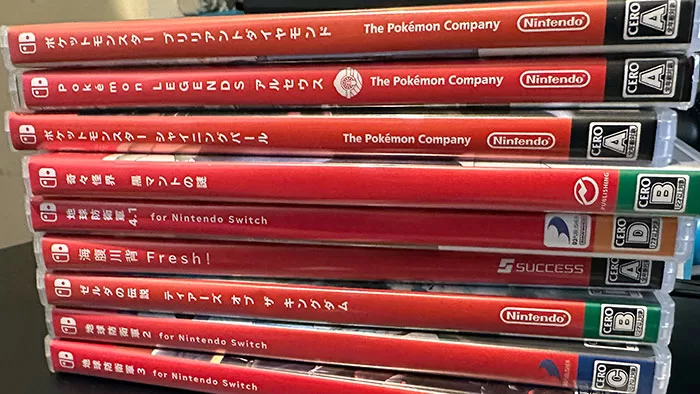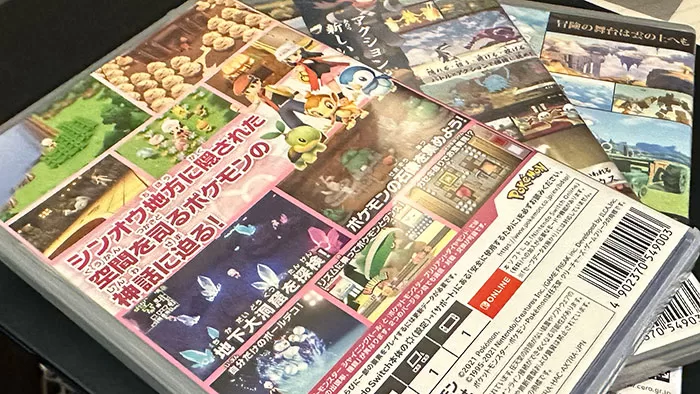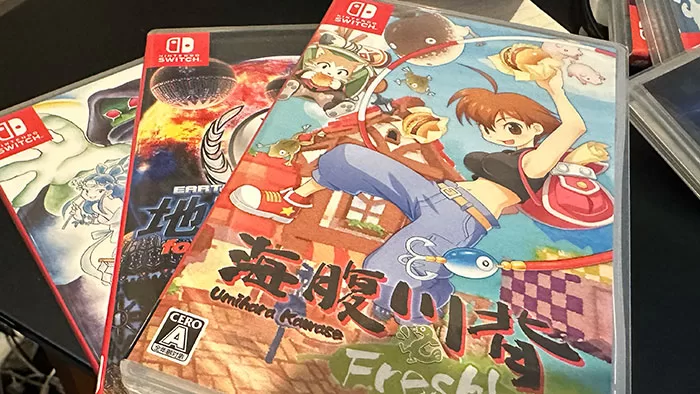Buying and using Japanese Switch games can open up a wider games library and save you serious money — with a few catches. Here’s what you need to know.
How Do I? covers the basics, because we’ve all got to start somewhere.
In some ways, this could be the easiest guide I ever write, because I could boil it down to the following:
How do I play Japanese Switch games on my Switch?
- Buy Japanese Switch Game
- Put Japanese Switch Game into your Nintendo Switch
- Play game.
- Remember to stay hydrated and take regular breaks (optional, but recommended).
Is it really that simple?
Yes… and no. The Switch is region-free for games, so there’s no real issue there.
However there are catches that it’s worth being aware of before you dive in. I’m (as of the time of writing this article) quite recently back from a trip to Japan where I carefully bought selected Switch games to add to my collection, taking into consideration the following realities.
They can be cheaper… but not always

A little trickier to read the spines, unless you’re good with your kanji, katakana and hiragana…
Japan has a rich recycling and second-hand economy. It’s one of the reasons it’s been one of the places to visit if you’re into retro gaming, because there’s few other places on the planet where every major city (and many minor ones) will have stores that still have Super Nintendo and NES/Famicom games on shelves. I love me a good Book-Off find.. but I digress.
That same second-hand economy extends to more recent game systems, including the Nintendo Switch. To give an example from my recent trip, my travelling companion picked up a number of Pokemon Switch games, some for as little as $10. Were they brand-spanking new? No, they weren’t, but in condition terms I’ve been sold new games that looked identical to what she bought.
So, it’s all bargains as far as the eye can see, right?
Nope. For most very new games, the margin of difference in pricing can be very slight indeed, if not non-existent. I saw numerous Switch games at the same essential Yen price as I’d pay in Australian dollars, and that’s without taking any currency conversion fees, credit card fees or other purchase costs into consideration.
It really does pay to do your sums and look at daily currency rates, because if the differences in cost are minor you’re not really getting a bargain, especially when you consider that the game’s warranty will only apply within Japan.
This also means it’s a good idea where possible to test those titles before you leave Japan, just in case something goes wrong.
One small trap here is that if you do opt for tax-free shopping — cutting the consumption tax out of your purchase price to save even more — then you’re technically not meant to open any items purchased until you’ve left Japan. I genuinely do not know what would pass as “consumption” of a Switch game (don’t eat them, they taste bad apparently) within Japan, but I do know I wouldn’t want to argue this with a border security person on my way out of the country.
If you’re buying Japanese games through an online retailer that isn’t a consideration, but then you can’t claim the tax-free threshold anyway. For Australian consumers, you may (and technically should, staying within the letter of the law) get hit with a GST demand on those titles as well. Again, do your sums and make sure that those deals really are bargains before hitting on the “Buy Now” button.
The language barrier could be interesting (or no problem at all)

Japanese Switch games are in Japanese, right?
Well… maybe. Or yes. Or no, depending on the game.
This very much comes down to the individual publisher, their international market and the game in question. There are actually plenty of Japanese Switch games that include English language options as part of the package.
I won’t reinvent the wheel here; I used a couple of different guides — this one at MobyGames mostly — to check. It may be very different if you’re after languages other than English, I should note.
That language support can appear different ways. For the Pokemon games my partner purchased, it was an option within the game itself, which makes sense when you consider that Nintendo tends to release those games internationally on the same exact day. There’s no real reason why they couldn’t make it all available on the same cart to save pressing multiple different cart variants, so it probably saves them a little money too.
For other games — such as the copy of Umihara Kawase Fresh! that I purchased — I was pleasantly surprised to discover that it defaulted to the English language version from the get-go.
But it’s not true for everything I purchased. Japan is the only place where D3’s released its Switch versions of EDF 2, EDF 3 and EDF 4.1 to cart as an example, and I was keen to pick all three of those up.
That wasn’t too hard (or too expensive) but those games are Japanese only. I’ve got enough rudimentary Japanese to get by, and frankly you wouldn’t need much for those games… but it can vary widely.

EDF isn’t as complex as it might appear. It’s also great. Play it.
One way around this is to learn Japanese. It’s a fascinating language and culture, but I won’t pretend it’s not also a lot of work to learn. Satisfying, though, especially as I can now understand some of what’s going on in those EDF games from the speech alone.
Updates and DLC might get interesting

The other area that could be a concern — and here I’m theorising because I’ve not hit it myself — is the question of updates and future DLC.
For the titles I’ve got with Japanese origins I’ve had few issues when updates were available as far as I can see, but the same wasn’t true for the download DLC codes within those boxes. In every case their codes were for the Japanese Switch eShop, and to get past that you’d need to set up a secondary account for that eShop to take advantage of it.
I’ve not done that yet, and I’m also left wondering whether the second-hand copies I’ve got would have been redeemed anyway. The risk feels small here, but it’s not insignificant, and again it would come down more to publisher preference how many hoops you might need to jump through.
I presume — though again I haven’t tested — that the same would be true for any purely cloud-only-streamed games, where you may need to mess around with VPNs for access in any case.
